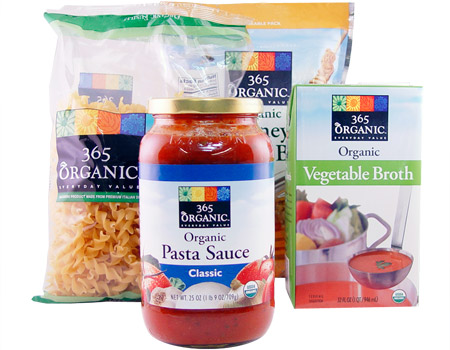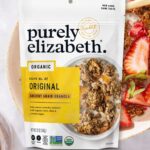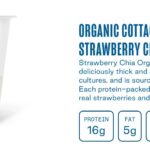Whole Foods, a brand I greatly admire, feels a challenge in their markets and in the stock market. Their growth isn’t what it was, and they often have to overcome the burden of the ‘whole paycheck’ image. So they recently announced that they would offer a new type of store called 365 by Whole Foods. 365 is their house brand that offers lower priced items to national brands.
Can this strategy work? I’m very skeptical.
I believe that organizations have a difficult enough task doing one thing well. When you add another strategy, it dilutes the entire enterprise. United tried this with Ted, the low-cost version of their airlines. They shut that down about five years after the launch. They tried to be United and Southwest at the same time.
Having a foot in two camps at the same time almost never works.
There are companies who market multiple brands. The leader is P&G, who is the classic example of a house of brands strategy. (Tide, Pampers, Crest, etc.) But the skills at P&G are different from the skills owned by the folks at Whole Foods.
365 by Whole Foods – What Would I Do?
If I were CEO, what would I do with this dilemma? How would I attack this problem?
My approach would be to be a 365 store within the store, a place where the customer could find less expensive versions of products grouped together. If the Whole Foods team believes that they need to bring Millennials into their stores, then make it a different type of section within the store – almost like a club. Make it appeal to a different audience with a bar-like atmosphere with different music. A typical Whole Foods store are usually playing Marvin Gaye, The Supremes and The Beatles appealing to people like me and other Boomers.
What if there was a section of the store that was organized differently with lower-cost products, and a different vibe? What I like about this idea is that you would still be keeping those customers within your store and just giving them their own space. Not to sound patronizing, but it is a little like having a play land within McDonald’s for little kids. Create a value section within Whole Foods. I’d also have pre-portioned foods and recipes to make it easy for people to come in and buy everything they need to make a great quick dinner; almost like Blue Apron or Plated . Nice quality ingredients, less intimidating recipes and easy to grab and fix ready to fix meals on the run. I’d promote how easy it is to have dinner for two, from their prepared food section for $15. (I do it all the time)
Maybe they need to get Millennials in the store. What would happen if on Friday and Saturday nights, starting at 10:00 pm, the closed stores get turned into a place to hear live music. You can only get in with ID (between 21-40). Get a younger audience in the store with a fresh and innovative experience.
Running two different and separate businesses is very difficult. And perhaps a separate store is necessary. If it were me, I’d rather find a path to have an entry level for a younger audience with less to spend, but not to put them somewhere completely different. My idea is sort of the kids table at Thanksgiving approach; keep the Millennials near so they can aspire to be with the grownups someday.
I purchase plenty of 365 products because my needs are met by those products. Their house brand (365) goat cheese meets my desire for a tangy topping for salads. I understand why local supplier’s goat cheese and cherve are more expensive than house brands. I do buy so called ‘white label’ or generic on occasion. A separate area of 365 products would appeal to me but, I’m still going to buy based on category, needs and fit for the occasion.
Department stores like Macy’s and Nordstrom’s have been successful with the store within store approaches. Target recently announced the sale of its pharmacies to Walgreens so like their arrangement with Starbucks, they too will now have drugs stores (Walgreen Pharmacies) within their own stores. I like this approach because it allows a retailer to keep focused on what they do best. I’ll be interested to see how all this unfolds.
But my prediction is that 365 as a separate store idea won’t last a year.
Need a sounding board to discuss your go-to market strategy? Put a call to me on your shopping marketing list.





Great thinking, as always, Jeff! Brand dilution has happened so frequently with such disastrous consequences that you’d think savvy companies (Whole Food certainly fits that group) would be a little more cautious before dipping a toe (let alone a whole foot) into that particular water. My only two ideas to bolt on to your thinking would be to: (a) ensure shoppers don’t feel like they’re “slumming it” in the lower-cost section (so that, as you’ve suggested, the 365 brand becomes more of a lifestyle thing than specifically a “value” thing); and (b) maybe consider a different flavor (pardon the pun) for the visual identity (seems a little static for a notion that’s so dynamic). Hope they read your post and take your advice! Thanks for sharing your thinking with me and all your other readers — always enjoy them and learn something from them!
Thanks for the comment Joseph. I wonder if WF whould also be doing some small, local experiments to figure out ways in different regions to bring in more Millennials before jumping into a completely different format. Tailgating parties after hours, picnics on the roof, music festivals in the parking lot in the early evening, etc. Find ways to build a life-style brand/experience and do it 365. Cheers and thanks again for the kind words.